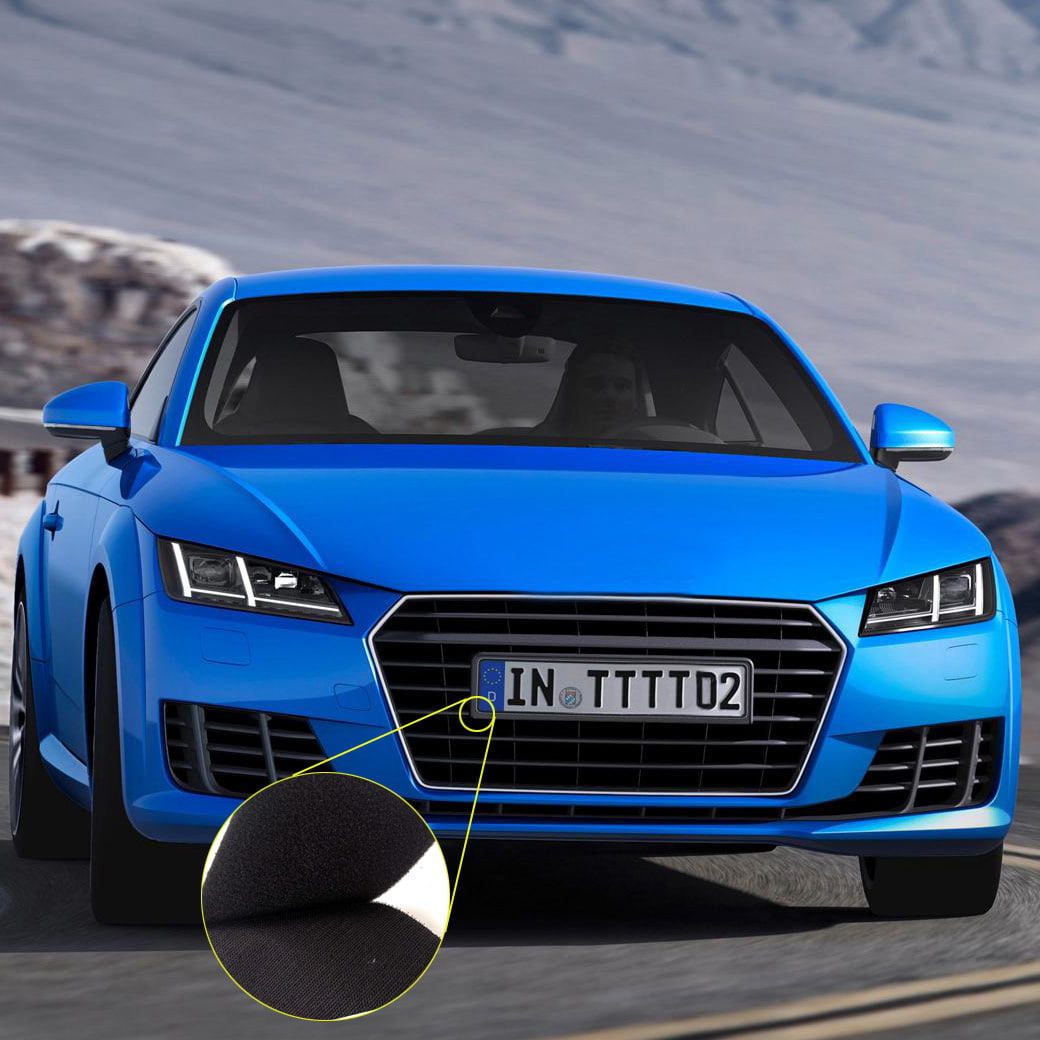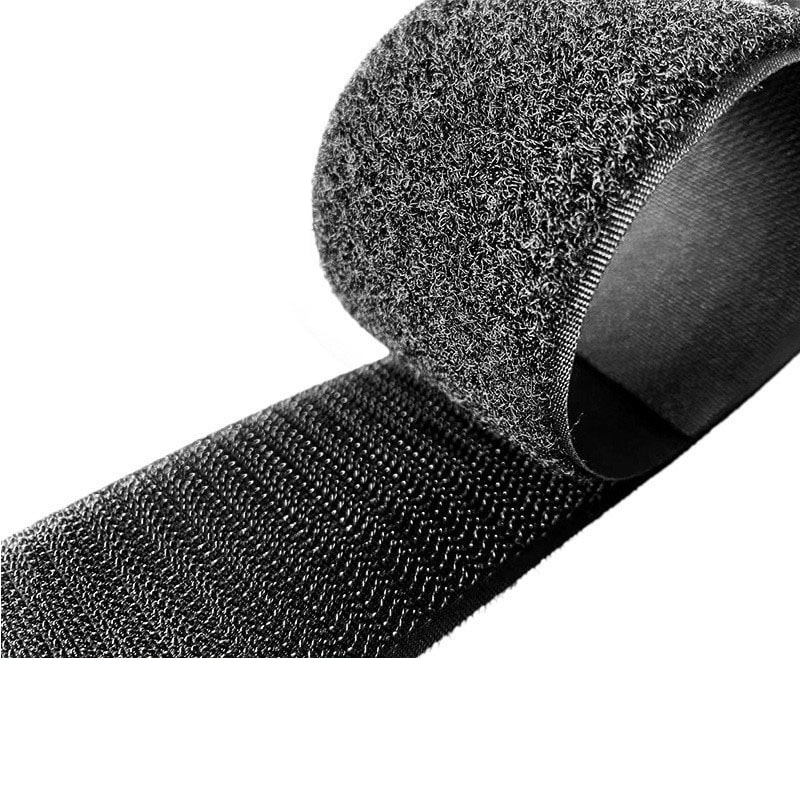Ohne Bohren: Die moderne Art, Kennzeichen mit Klett zu befestigen
Aug 29, 2025
Was wäre, wenn Sie Ihr Nummernschild ohne Werkzeug befestigen könnten? Ohne die Gefahr, Ihre Stoßstange zu beschädigen? Ohne das lästige Bohren von Löchern? Das ist keine Zukunftsmusik – es ist Realität, ermöglicht durch fortschrittliche Klettverschluss-Technologie. In diesem Artikel stellen wir diese innovative, bohrfreie Methode vor, die die Einstellung von Autofahrern und Fachleuten zur Nummernschildmontage verändert.
Warum einen Kennzeichenhalter mit Klettverschluss wählen?
Mühelose, werkzeuglose Installation: Vergessen Sie die Suche nach Schraubendrehern. Unser Halter lässt sich in Sekundenschnelle und ohne Werkzeug installieren und ist damit die einfachste Lösung auf dem Markt.
Null Schäden an Ihrem Fahrzeug: Die starke, wasserfeste Kleberückseite lässt sich ohne Bohren fest anbringen und sorgt dafür, dass Lack und Karosserie Ihres Autos makellos bleiben – keine Kratzer, keine Löcher, keine bleibenden Spuren.
Langlebig: Unser Halter ist aus hochwertigem Nylon gefertigt und verfügt über eine stark klebende Rückseite. Er ist wasserdicht, wetterbeständig und so konzipiert, dass er das ganze Jahr über sicheren Halt bietet.
Leicht und diskret: Das minimalistische, rahmenlose Design ist leichter als herkömmliche Metallrahmen und bietet ein klares, elegantes Aussehen, das zu jedem Fahrzeug passt.
Universell passend für die meisten Autos: Es lässt sich mit einer Schere leicht auf die passende Größe zuschneiden und passt auf die meisten Standardkennzeichen in der EU, einschließlich Deutschland und Österreich.
Straßensicher: Diese auf Langlebigkeit und starken Halt ausgelegte Lösung ist für den alltäglichen Straßenverkehr absolut zuverlässig.
二、Sicherheit geht vor: So wählen Sie die richtigen Klettprodukte aus
Bei der Nummernschildmontage ist Sicherheit unerlässlich. Nicht alle Klettprodukte sind gleich – bei Verwendung einer minderwertigen Option besteht die Gefahr, dass sich Ihr Nummernschild während der Fahrt löst. Für garantierte Sicherheit und Leistung achten Sie stets auf diese drei Hauptmerkmale:
1. Langlebiges Material:Entscheiden Sie sich für eine hochfeste Mischung aus Nylon und PE. Diese Kombination bietet hervorragende Witterungsbeständigkeit und UV-Stabilität und verhindert so eine Verschlechterung im Laufe der Zeit.
2. Hochleistungskleber: Die Rückseite muss aus hitzebeständigem, automobiltauglichem Klebstoff bestehen, der rauen Bedingungen standhält – darunter extremen Temperaturen, Hochgeschwindigkeitsfahrten und häufigen Autowäschen.
3. Für den Einsatz im Automobilbereich entwickelt: Wählen Sie ein Produkt, das speziell für den Einsatz im Fahrzeug entwickelt wurde. Es sollte eine geprüfte Abzieh- und Scherfestigkeit aufweisen, um sicherzustellen, dass Ihr Kennzeichen auch bei alltäglichen Fahrvibrationen fest haftet.
Schauen Sie sich die CCH Kennzeichenhalter mit Klettverschluss– eine hochfeste Lösung, die speziell für Automobilanwendungen entwickelt wurde.
1. Installieren Sie Ihr Nummernschild in 4 einfachen Schritten
1. Reinigen Sie die Oberfläche
Wischen Sie den Bereich der Kennzeichenhalterung an der Stoßstange und die Rückseite des Kennzeichens gründlich mit einem Alkoholtuch ab. Stellen Sie sicher, dass Staub, Öl und Feuchtigkeit vollständig entfernt sind, und lassen Sie die Oberfläche vollständig trocknen.
2. Das Klettband anbringen
Befestigen Sie das Hakenband (raue Seite) auf der gereinigten Oberfläche der Fahrzeugstoßstange.
3. Das Klettband anbringen
Befestigen Sie das Flauschband (weiche Seite) auf der Rückseite des Nummernschilds.
4. Ausrichten und drücken
Richten Sie das Nummernschild sorgfältig an der Stoßstange aus und drücken Sie es 30 Sekunden lang fest an, um eine starke Haftung zu gewährleisten.
Installation abgeschlossen: Das Nummernschild ist jetzt sicher montiert und sieht sauber und ohne Schrauben aus.
Hinweis: Lassen Sie den Klebstoff 24 Stunden aushärten, bevor Sie mit hoher Geschwindigkeit fahren oder das Fahrzeug waschen.
四、FAQ
F: Ist diese Methode legal? Fällt die Platte ab?
A: In den meisten Regionen sind sicher montierte und gut sichtbare Schilder vorgeschrieben. Hochfeste Klettverschlüsse können bei ordnungsgemäßer Montage sogar zuverlässiger sein als Schrauben. Beachten Sie stets die örtlichen Gesetze.
F: Wie wird es entfernt? Hinterlässt es Rückstände?
A: Ziehen Sie es langsam mit der Hand ab. Hochwertiger Klebstoff hinterlässt normalerweise keine Rückstände, aber eventuelle Spuren können mit Alkohol oder Klebstoffentferner entfernt werden.
Bereit zum Ausprobieren?
Steigen Sie auf eine intelligentere, einfachere und sicherere Möglichkeit um, Ihr Nummernschild mit Klettverschluss in Industriequalität zu befestigen.
Kostenlose Proben erhältlich! ein Muster anfordern Kit zur Nummernschildmontage.
Sind Sie Großhändler, Einzelhändler oder Geschäftskunde? Kontaktieren Sie uns für OEM-Lösungen und Großhandelspreise.
Erkunden CCHHookloop-Produkte
Kontaktieren Sie uns für leistungsstarke Klettlösungen.
MEHR LESEN

